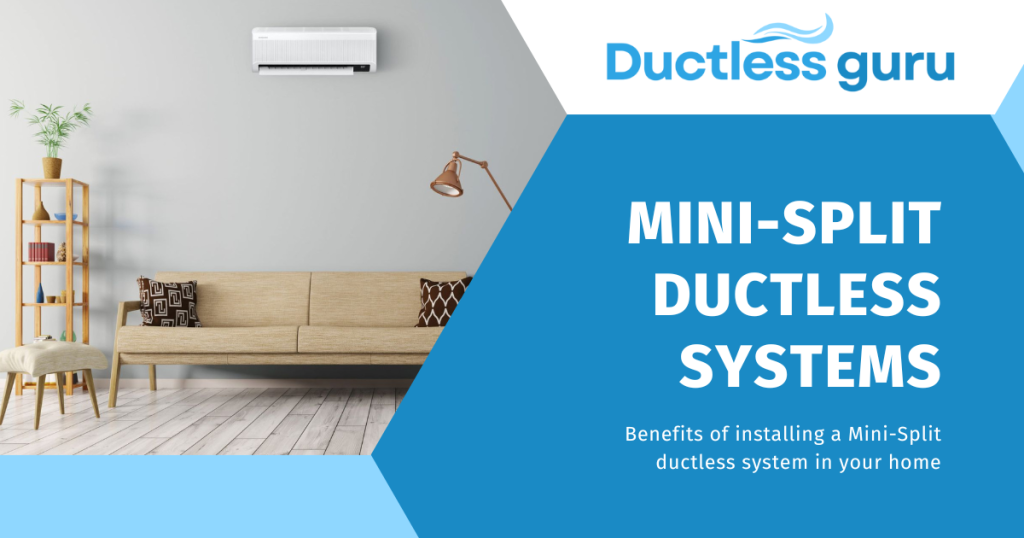
In the realm of home comfort and climate control, innovation continues to flourish, offering homeowners versatile solutions to meet their unique needs. One such innovation that has been gaining significant traction in recent years is the mini-split ductless system. These compact and efficient HVAC systems are revolutionizing the way we think about heating and cooling our homes. In this article, we’ll delve into the workings of mini split ductless systems, explore their benefits, and discuss why they are becoming the go-to choice for many homeowners.
Understanding Mini Split Ductless Systems
At its core, a mini-split ductless system consists of two main components: an outdoor compressor/condenser unit and one or more indoor air-handling units. Unlike traditional HVAC systems that rely on ductwork to distribute conditioned air throughout the home, mini-split systems operate without ducts. This makes them ideal for homes without existing ductwork or for room additions where extending ducts may not be feasible.
The indoor units, typically mounted on walls or ceilings, are responsible for delivering conditioned air directly into the living space. These units are connected to the outdoor unit via a conduit containing refrigerant lines, a power cable, and a condensate drain. The outdoor unit houses the compressor, condenser coil, and expansion valve, and it is responsible for exchanging heat with the outdoor environment.

Advantages of Mini-Split Ductless Systems
1. Energy Efficiency:
Mini split ductless systems offer exceptional energy efficiency compared to traditional HVAC systems. Because they don’t suffer from the energy losses associated with ductwork, they can deliver conditioned air directly to where it’s needed, resulting in lower energy consumption and reduced utility bills.
2. Zoning Capabilities:
One of the most significant advantages of mini-split systems is their ability to provide zoning capabilities. Each indoor unit can be controlled independently, allowing homeowners to customize the temperature settings for different zones or rooms according to their preferences. This not only enhances comfort but also helps save energy by avoiding the need to heat or cool unoccupied spaces.
3. Easy Installation:
The absence of ductwork makes installation significantly easier and less invasive compared to traditional HVAC systems. In many cases, installation can be completed in a matter of hours, minimizing disruption to the home and eliminating the need for extensive remodeling.
4. Flexibility:
Mini split ductless systems offer unparalleled flexibility when it comes to placement and design. Because the indoor units are compact and can be installed virtually anywhere, homeowners have the freedom to customize their HVAC system to suit their aesthetic preferences and spatial constraints.
5. Improved Indoor Air Quality:
With traditional HVAC systems, ductwork can harbor dust, allergens, and other contaminants, which are then circulated throughout the home. Mini split ductless systems eliminate this issue by delivering conditioned air directly into the living space, resulting in improved indoor air quality and a healthier environment for occupants.
Applications of Mini Split Ductless Systems
The versatility of mini split ductless systems makes them suitable for a wide range of applications, including:
Residential Use:
Mini split systems are an excellent choice for residential properties, particularly older homes without existing ductwork or those undergoing renovations. They provide efficient and customizable heating and cooling solutions without the need for extensive remodeling.
Commercial Use:
In commercial settings such as offices, retail stores, and restaurants, mini split ductless systems offer flexibility and energy efficiency. They can be installed quickly and easily, allowing businesses to maintain optimal indoor comfort for employees and customers while minimizing energy costs.
Multi-Zone Cooling:
For larger homes or buildings with multiple rooms or zones, multi-zone mini-split systems offer the perfect solution. With the ability to connect multiple indoor units to a single outdoor unit, homeowners can create customized climate zones throughout their property, ensuring comfort and energy savings.
Conclusion
Mini split ductless systems represent a paradigm shift in HVAC technology, offering homeowners and businesses alike a versatile, energy-efficient, and customizable solution for heating and cooling needs. With their easy installation, zoning capabilities, and improved energy efficiency, these systems are becoming increasingly popular in both residential and commercial settings. As we continue to prioritize comfort and sustainability in our homes and buildings, mini-split ductless systems are poised to play a central role in shaping the future of HVAC technology.
